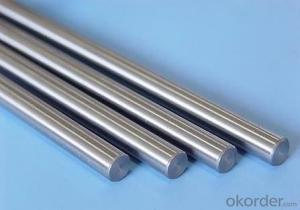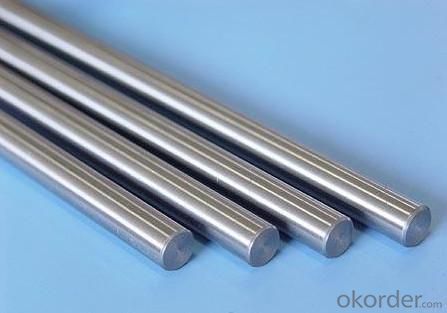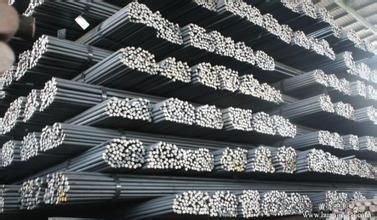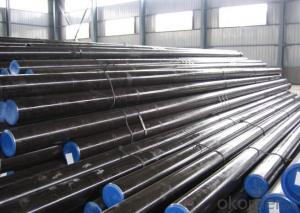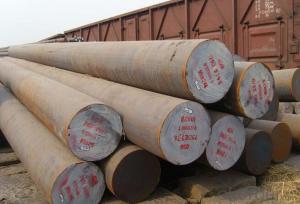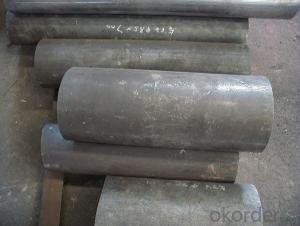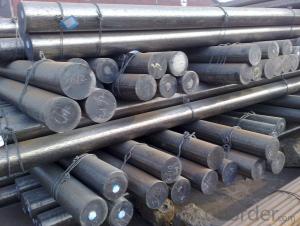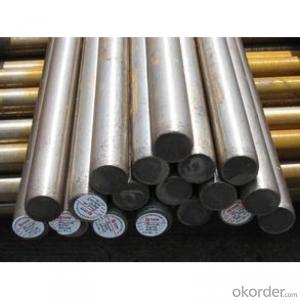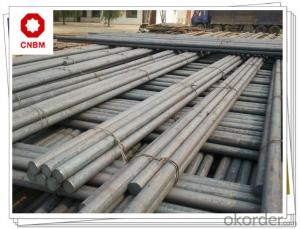SAE1020 Special Bar Type
- Loading Port:
- China Main Port
- Payment Terms:
- TT or LC
- Min Order Qty:
- -
- Supply Capability:
- -
OKorder Service Pledge
OKorder Financial Service
You Might Also Like
Product Description:
OKorder is offering SAE1020 Special Bar Type at great prices with worldwide shipping. Our supplier is a world-class manufacturer of steel, with our products utilized the world over. OKorder annually supplies products to European, North American and Asian markets. We provide quotations within 24 hours of receiving an inquiry and guarantee competitive prices.
Product Applications:
SAE1020 Special Bar Type are ideal for structural applications and are widely used in the construction of buildings and bridges, and the manufacturing, petrochemical, and transportation industries.
Product Advantages:
OKorder's SAE1020 Special Bar Type are durable, strong, and resist corrosion.
Main Product Features:
· Premium quality
· Prompt delivery & seaworthy packing (30 days after receiving deposit)
· Corrosion resistance
· Can be recycled and reused
· Mill test certification
· Professional Service
· Competitive pricing
Product Specifications:
Manufacture: Hot rolled
Grade: Q195 – 235
Certificates: ISO, SGS, BV, CIQ
Length: 6m – 12m, as per customer request
Packaging: Export packing, nude packing, bundled
Chinese Standard (H*W*T) | Weight (Kg/m) | 6m (pcs/ton) | Light I (H*W*T) | Weight (Kg/m) | 6m (pcs/ton) | Light II (H*W*T) | Weight (Kg/m) | 6M |
100*68*4.5 | 11.261 | 14.8 | 100*66*4.3 | 10.13 | 16.4 | 100*64*4 | 8.45 | 19.7 |
120*74*5.0 | 13.987 | 11.9 | 120*72*4.8 | 12.59 | 13.2 | 120*70*4.5 | 10.49 | 15.8 |
140*80*5.5 | 16.89 | 9.8 | 140*78*5.3 | 15.2 | 10.9 | 140*76*5 | 12.67 | 13.1 |
160*88*6 | 20.513 | 8.1 | 160*86*5.8 | 18.46 | 9 | 160*84*5.5 | 15.38 | 10.8 |
180*94*6.5 | 24.143 | 6.9 | 180*92*6.3 | 21.73 | 7.6 | 180*90*6 | 18.11 | 9.2 |
200*100*7 | 27.929 | 5.9 | 200*98*6.8 | 25.14 | 6.6 | 200*96*6.5 | 20.95 | 7.9 |
220*110*7.5 | 33.07 | 5 | 220*108*7.3 | 29.76 | 5.6 | 220*106*7 | 24.8 | 6.7 |
250*116*8 | 38.105 | 4.3 | 250*114*7.8 | 34.29 | 4.8 | 250*112*7.5 | 28.58 | 5.8 |
280*122*8.5 | 43.492 | 3.8 | 280*120*8.2 | 39.14 | 4.2 | 280*120*8 | 36.97 | 4.5 |
300*126*9 | 48.084 | 3.4 | 300*124*9.2 | 43.28 | 3.8 | 300*124*8.5 | 40.87 | 4 |
320*130*9.5 | 52.717 | 3.1 | 320*127*9.2 | 48.5 | 3.4 | |||
360*136*10 | 60.037 | 2.7 | 360*132*9.5 | 55.23 | 3 |
FAQ:
Q1: Why buy Materials & Equipment from OKorder.com?
A1: All products offered byOKorder.com are carefully selected from China's most reliable manufacturing enterprises. Through its ISO certifications, OKorder.com adheres to the highest standards and a commitment to supply chain safety and customer satisfaction.
Q2: How do we guarantee the quality of our products?
A2: We have established an advanced quality management system which conducts strict quality tests at every step, from raw materials to the final product. At the same time, we provide extensive follow-up service assurances as required.
Q3: How soon can we receive the product after purchase?
A3: Within three days of placing an order, we will begin production. The specific shipping date is dependent upon international and government factors, but is typically 7 to 10 workdays.
Q4: What makes stainless steel stainless?
A4: Stainless steel must contain at least 10.5 % chromium. It is this element that reacts with the oxygen in the air to form a complex chrome-oxide surface layer that is invisible but strong enough to prevent further oxygen from "staining" (rusting) the surface. Higher levels of chromium and the addition of other alloying elements such as nickel and molybdenum enhance this surface layer and improve the corrosion resistance of the stainless material.
Q5: Can stainless steel rust?
A5: Stainless does not "rust" as you think of regular steel rusting with a red oxide on the surface that flakes off. If you see red rust it is probably due to some iron particles that have contaminated the surface of the stainless steel and it is these iron particles that are rusting. Look at the source of the rusting and see if you can remove it from the surface.
Images:
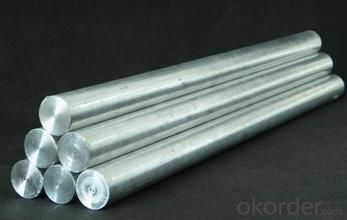
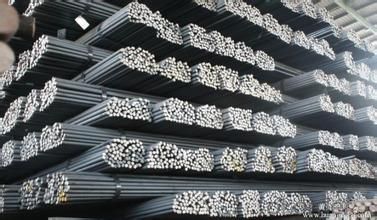
- Q: How do you calculate the moment of inertia for a steel angle?
- In order to determine the moment of inertia of a steel angle, it is necessary to have knowledge of the angle's dimensions and shape. The moment of inertia measures an object's resistance to rotational changes and is influenced by the distribution of mass and the distance between the object's mass and the axis of rotation. For a steel angle, the moment of inertia can be computed using the parallel axis theorem, which states that the moment of inertia around an axis parallel to the original axis is equal to the sum of the moment of inertia around the original axis and the product of the mass and the square of the distance between the two axes. To calculate the moment of inertia for a steel angle, the following steps can be followed: 1. Obtain the measurements of the steel angle, including its length, width, and thickness. 2. Determine the angle's area by multiplying the length by the thickness. 3. Identify the centroid of the angle, which is the point where the mass is evenly distributed. For a symmetrical angle, the centroid is located at the intersection of the two legs. For an asymmetrical angle, the centroid can be determined by utilizing the geometric properties of the shape. 4. Compute the moment of inertia around the centroid axis using the formula for a rectangle: I = (1/12) * width * thickness^3. This calculation assumes that the angle is a thin-walled section. 5. Calculate the distance between the centroid axis and the axis for which the moment of inertia is desired. This can be accomplished by measuring the perpendicular distance between the two axes. 6. Apply the parallel axis theorem to determine the moment of inertia around the desired axis. The formula is: I_total = I_centroid + mass * distance^2. By following these steps, it is possible to calculate the moment of inertia for a steel angle. However, it should be noted that these calculations are based on a simplified model of the angle and may not provide accurate results for complex or irregular shapes.
- Q: How do you determine the torsional stiffness of a steel angle?
- The torsional stiffness of a steel angle can be determined by calculating the polar moment of inertia of the cross-sectional area of the angle. This can be done by considering the geometry and dimensions of the angle and using the appropriate formulas. Once the polar moment of inertia is determined, it can be used to calculate the torsional stiffness of the steel angle.
- Q: What are the common methods of surface finishing for steel angles?
- Steel angles can be surface finished in various ways to achieve specific aesthetic and functional properties. The following methods are commonly used: 1. Paint application: To protect against corrosion and enhance appearance, a protective coat of paint is applied to the steel angle. Different types of paint, like epoxy, acrylic, or powder coatings, are chosen based on specific needs. 2. Galvanization: This method involves immersing the steel angle in molten zinc to create a protective layer on its surface. Galvanization is particularly effective for steel angles exposed to harsh environments or outdoor use. 3. Powder coating: In this process, a dry powder is electrostatically sprayed onto the steel angle and then cured in an oven. The result is a durable finish that resists chipping, fading, and corrosion. Powder coating is preferred when a thicker, more robust finish is desired. 4. Anodizing: Although mainly used for aluminum, anodizing can also be applied to steel angles. It creates an oxide layer on the surface through an electrochemical process, providing increased corrosion resistance and the option to add color. 5. Shot blasting: This surface preparation technique involves bombarding the steel angle with small steel shots at high velocity. Shot blasting removes rust, mill scale, and other impurities, leaving the surface clean and prepared for further finishing processes. 6. Polishing: This technique mechanically smooths and shines the steel angle's surface, achieving a reflective, mirror-like finish or removing imperfections. These methods offer different advantages and are suitable for various applications. The choice of method depends on factors such as desired appearance, environmental conditions, and specific performance requirements.
- Q: How do you determine the deflection of a steel angle?
- To determine the deflection of a steel angle, you need to consider various factors such as the applied load, the moment of inertia of the angle, the length of the span, and the modulus of elasticity of the steel. By utilizing the appropriate formulas and equations for deflection, such as the Euler-Bernoulli beam theory, you can calculate the deflection of the steel angle under the given load and conditions.
- Q: How do you reinforce a steel angle?
- One way to reinforce a steel angle is by adding additional structural elements such as steel plates or gussets. These can be welded or bolted onto the angle to increase its strength and load-bearing capacity. Additionally, using thicker and higher-grade steel angles can also provide increased reinforcement.
- Q: What is the fire resistance rating of steel angles?
- The fire resistance rating of steel angles depends on various factors such as the size and thickness of the angle, the type of steel used, and the specific fire protection measures implemented. Steel is inherently fire-resistant due to its high melting point and low thermal conductivity. However, the fire resistance rating can be enhanced by applying fireproofing materials, such as intumescent coatings or fire-resistant boards, to the steel angles. These fire protection measures can significantly increase the fire resistance rating of steel angles by providing insulation and slowing down the transfer of heat to the steel. The specific fire resistance rating can vary based on the thickness and type of fireproofing materials used. For example, a steel angle with a certain fireproofing coating may have a fire resistance rating of 60 minutes, meaning it can withstand exposure to fire for up to 60 minutes before losing its structural integrity. It is important to consult local building codes, regulations, and fire safety standards to determine the specific fire resistance requirements for steel angles in a particular application. These standards can provide guidance on the necessary fire protection measures and the minimum fire resistance ratings that need to be met in different construction scenarios.
- Q: How do you determine the required length of a steel angle for a specific application?
- To determine the required length of a steel angle for a specific application, you typically need to consider the dimensions and requirements of the project. This involves taking measurements, understanding the load or weight it will bear, and considering any necessary safety factors. Consulting structural engineering codes or guidelines can also provide valuable information to ensure the angle is appropriately sized for the intended use.
- Q: How do you store steel angles?
- Steel angles have various storage options depending on space availability and quantity. Here are a few commonly used techniques: 1. Vertical Storage: To store steel angles vertically, they can be leaned against a wall or placed on a storage rack. This method works well for smaller quantities, allowing easy access to each angle. It is crucial to ensure stability and secure positioning to prevent accidents. 2. Horizontal Storage: For larger quantities, steel angles can be stored horizontally. This can be achieved by stacking them on a pallet or using a compartmentalized storage rack. When stacking, it is important to evenly distribute the weight and use spacers between angles to prevent deformation. 3. Bundled Storage: When dealing with a large number of steel angles, bundling them together can be a convenient storage method. This involves tying the angles with steel strapping or using banding equipment. Bundling helps maintain organization and prevents shifting or falling during storage or transportation. Regardless of the chosen storage method, the following points should be considered: - Provide a clean and dry storage area to prevent rust or corrosion. - Ensure proper ventilation to avoid moisture buildup. - Keep angles away from direct sunlight and extreme temperature changes. - Regularly inspect for damage or corrosion. - Use appropriate lifting equipment and follow safety guidelines when moving or stacking steel angles.
- Q: How do steel angles contribute to the overall stability of a building frame?
- Steel angles contribute to the overall stability of a building frame by providing structural support and reinforcement. They are commonly used as braces and connections in building frames to increase their load-bearing capacity and resist forces such as wind, earthquakes, and heavy loads. The angles help distribute and transfer the loads throughout the structure, enhancing its stability and preventing deformation or collapse.
- Q: What are the common shapes and dimensions of steel angles?
- There is a wide range of options for steel angles in terms of shape and dimensions to accommodate various uses. The most common shapes are L-shaped or right angles, with legs that can be equal or unequal. These angles are typically created by bending a piece of steel into the desired shape. In terms of size, steel angles can vary depending on their intended purpose. The length of the legs, which are the two sides of the angle, can range from a few inches to several feet. The thickness or gauge of the steel used to make angles can also vary, with thinner gauges being lighter and thicker gauges providing more strength. The most commonly used dimensions for steel angles are as follows: - Equal Leg Angles: These angles have legs of equal length, forming a 90-degree angle. Common sizes for equal leg angles range from 1/2 inch to 6 inches in leg length, with thicknesses ranging from 1/8 inch to 1/2 inch. - Unequal Leg Angles: These angles have legs of different lengths, forming a 90-degree angle. The longer leg is usually referred to as the "vertical leg" and the shorter leg as the "horizontal leg." Common sizes for unequal leg angles range from 1 inch to 6 inches in vertical leg length, with thicknesses ranging from 1/8 inch to 1/2 inch. It's important to note that these dimensions serve as general guidelines, and custom-made steel angles can be produced to meet specific requirements. Additionally, steel angles can be hot-rolled or cold-formed, which affects their structural properties and manufacturing processes. Therefore, it's crucial to consult the specific standards and regulations applicable to your project or industry when selecting steel angles.
Send your message to us
SAE1020 Special Bar Type
- Loading Port:
- China Main Port
- Payment Terms:
- TT or LC
- Min Order Qty:
- -
- Supply Capability:
- -
OKorder Service Pledge
OKorder Financial Service
Similar products
Hot products
Hot Searches
Related keywords
